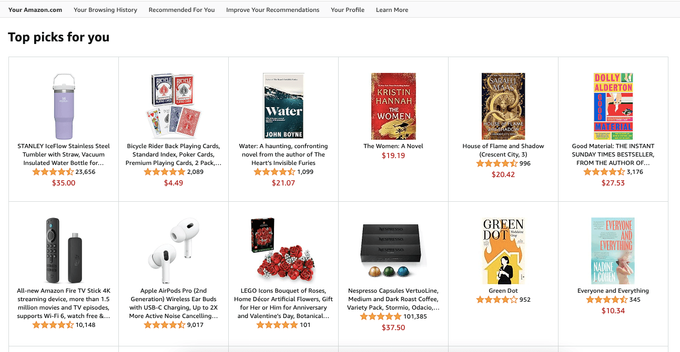Enhancing Online Retail Success Through Product Data Enrichment
By adding detailed product information like descriptions, images, and specifications, customers are more likely to discover and purchase your products.
Updated November 19, 2024.

Product data enrichment in eCommerce means improving product listings by adding detailed information like descriptions, images, and specifications. This makes products more appealing to customers, easier to find in searches, and helps increase the sales of the product.
Meet the Expert
Arjel Vajvoda, Head of Product at Motomtech, leverages her extensive experience in customer support to craft user-focused SaaS products with innovative documentation solutions.
» Let AI do the work for you with our eCommerce data enrichment solutions
Why Does Product Data Enrichment Matter?
Not having effective data enrichment on your eCommerce product pages can lead to the following negative effects on business performance:
- Poor site search visibility: Insufficiently enriched product data makes items harder to find in search results, leading to fewer customer visits and lost sales opportunities.
- Low customer engagement: Incomplete or vague product details can discourage potential buyers, reducing engagement and loyalty and increasing cart abandonment rates.
- High return rates: Lack of detailed product information can lead to customer dissatisfaction and higher return rates due to unmet expectations.
- Increased operational costs: High return rates lead to increased operational costs for processing returns, managing inventory and customer service, and affecting overall profitability.
» Start with understanding the difference between product search and product discovery
4 Benefits of Enriched Product Data in eCommerce
- Improved product discoverability: Enriched product data enhances product discovery and SEO by including detailed descriptions, keywords, and tags, making products easier to find in search results. This leads to increased traffic and visibility by up to 50%, driving more potential customers to the site.
- Higher conversion rates: Detailed and appealing product information throughout your merchandising helps customers make informed decisions, reducing hesitation and increasing the likelihood of purchases by up to 30%.
- Reduced return rates: Accurate and comprehensive product details minimize misunderstandings and mismatches between customer expectations and the actual product, potentially leading to return rates below 10%.
- Enhanced customer experience: Enriched data provides a better shopping experience by offering comprehensive product information, images, and videos, which improves customer satisfaction and loyalty.
» See these ways to influence how customers make online buying decisions
Example: Trutech
When searching for the keyword "keyboards", the SERP (search engine results pages) displays multiple products from Trutech, outcompeting with eCommerce giants like Amazon despite having no reviews for many of their listed products. They achieved this by having extremely detailed product descriptions listing all the things potential buyers could need, such as key features (key types, connections, etc.), a keyword-rich product description, and high-quality imagery of the product.
Step-By-Step Guide to Product Data Enrichment
1. Data Collection
Gather raw product data from various sources such as suppliers, manufacturers, and existing databases. This step ensures you have all the necessary information to begin the enrichment process.
You can obtain data from the following sources:
- Supplier and manufacturer websites: Supplier and manufacturer data includes product specifications, technical details, and official descriptions, which is crucial for ensuring that product information is accurate and detailed. You can acquire this data through partnerships, supplier portals, and direct communication with manufacturers.
- Customer feedback/reviews: eCommerce product reviews from retailers' websites or stores like Amazon provide valuable insights into product performance, user experiences, and common issues.
- Competitor analysis: Analyzing competitors' product listings helps identify gaps and opportunities in product descriptions, features, and customer engagement tactics.
» Here are some data-backed strategies to increase AOV
2. Data Cleansing
Cleanse the collected data by removing duplicates, correcting errors, and standardizing formats. This step is crucial to ensure the data's accuracy and consistency before enrichment.
3. Data Enrichment
Enhance the cleansed data by adding detailed descriptions, high-quality images, and relevant attributes. This makes the product listings more comprehensive and appealing to potential customers.
» Enhance your site's navigation with Shopify product filters
4. Data Validation
Validate the enriched data to ensure it is accurate, consistent, and complete. This step involves reviewing the enriched data to catch any discrepancies or errors.
5. Data Implementation
Implement the enriched data into the eCommerce platform, updating product listings and making the information available to customers. This final step ensures that the enriched data is effectively utilized to enhance the shopping experience.
» Maximize product discovery with Shopify instant search
Pro tip: The industry of your store is crucial to the type of product data enrichment you'll need. For example, fashion stores are likely to utilize high-quality visual merchandising with an emphasis on materials and style descriptions, whereas electronics stores will focus more on technical specifications, compatibility, and performance metrics.
3 Common Challenges With Product Data Enrichment (+ Solutions)
1. Data Quality Issues
Inconsistent, duplicate, or incorrect data can hinder the enrichment process and lead to poor customer experiences.
Solution: Implement automated data cleansing tools to standardize and correct data before enrichment. Regular audits and validation checks can help maintain data quality.
2. Integration Difficulties
Integrating enriched data from various sources into existing systems can be complex and time-consuming.
Solution: Use middleware or data integration platforms to streamline the process and ensure seamless data flow between systems. APIs can also facilitate smoother integration.
3. Scalability Concerns
As your product catalog grows, managing and enriching large volumes of data becomes increasingly challenging.
Solution: Leverage AI and machine learning tools to automate data enrichment tasks. These technologies can handle large datasets efficiently and continuously improve through learning algorithms.
Key Metrics for Tracking the Performance of Data Enrichment Strategies
| Metric | Description | Benchmarks | Tips for improvement |
|---|---|---|---|
| Conversion Rate | Measures the percentage of visitors who make a purchase | 2-3% for general stores, 5-10% for niche markets | Implement high-quality product data and information, and consider using site search optimization |
| Return Rate | Tracks the percentage of products returned by customers | Below 10% | Improved product descriptions and accurate product data |
| Search Engine Ranking | Evaluates the position of product pages in search engine results | Strive to have key product pages within the top 10 search results for relevant keywords | Incorporate more keywords and user-friendly designs in your product pages |
| Customer Satisfaction Score (CSAT) | Measures customer satisfaction with their shopping experience | Aim for 80% or higher | Ensure a smooth purchase and checkout experience and accurate product data |
| Average Order Value (AOV) | Represents the average amount customers spend per order | Varies depending on store and industry, but could be improved by up to 20% through data enrichment | Detailed descriptions, product bundling, and upsell/cross-sell strategies can increase AOV |
» Enhance product discovery with an eCommerce product search engine
Future Product Data Trends
Augmented Reality
Integrating augmented reality (AR) into product data enrichment can revolutionize eCommerce by allowing customers to visualize products in their real-world environments before making a purchase.
This technology enhances product descriptions with interactive 3D models and AR experiences, providing a more immersive and informative shopping experience.
Example: IKEA
IKEA's AR app lets customers see how furniture would look in their homes, improving confidence in their purchasing decisions.
Artificial Intelligence
AI can also be used to dynamically generate and update product descriptions, images, and recommendations based on individual customer preferences and behaviors. By analyzing data such as browsing history, purchase patterns, and demographic information, AI can tailor product information to each customer, making the shopping experience more personalized and relevant.
» Learn more about AI-based personalization
Example: Amazon
Amazon's recommendation engine uses AI to suggest products that customers are likely to buy based on their past behavior
» Get started with the latest personalization technology
Leverage Customer Data for Enhanced Product Enrichment
A lesser-known but highly significant aspect of product data enrichment is the use of customer behavior analytics to tailor product data. By analyzing customer interactions, preferences, and purchasing patterns, retailers can dynamically adjust product descriptions, images, and attributes to better match customers' needs.
Utilizing the benefits of product data enrichment doesn't have to be a difficult or time-consuming process. With automated tools like Fast Simon, you can start populating your store with detailed product descriptions and merchandising data today.
» Interested in site search and personalization? Browse our solutions










